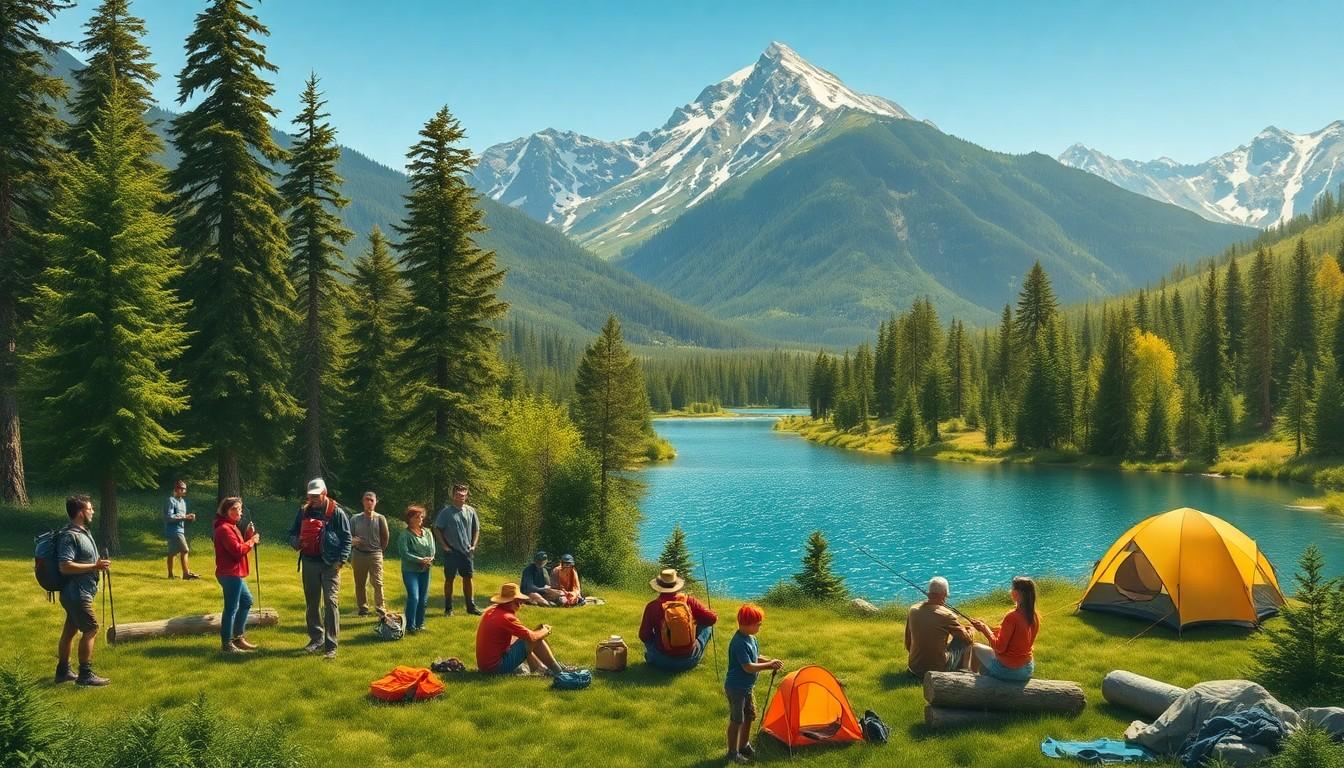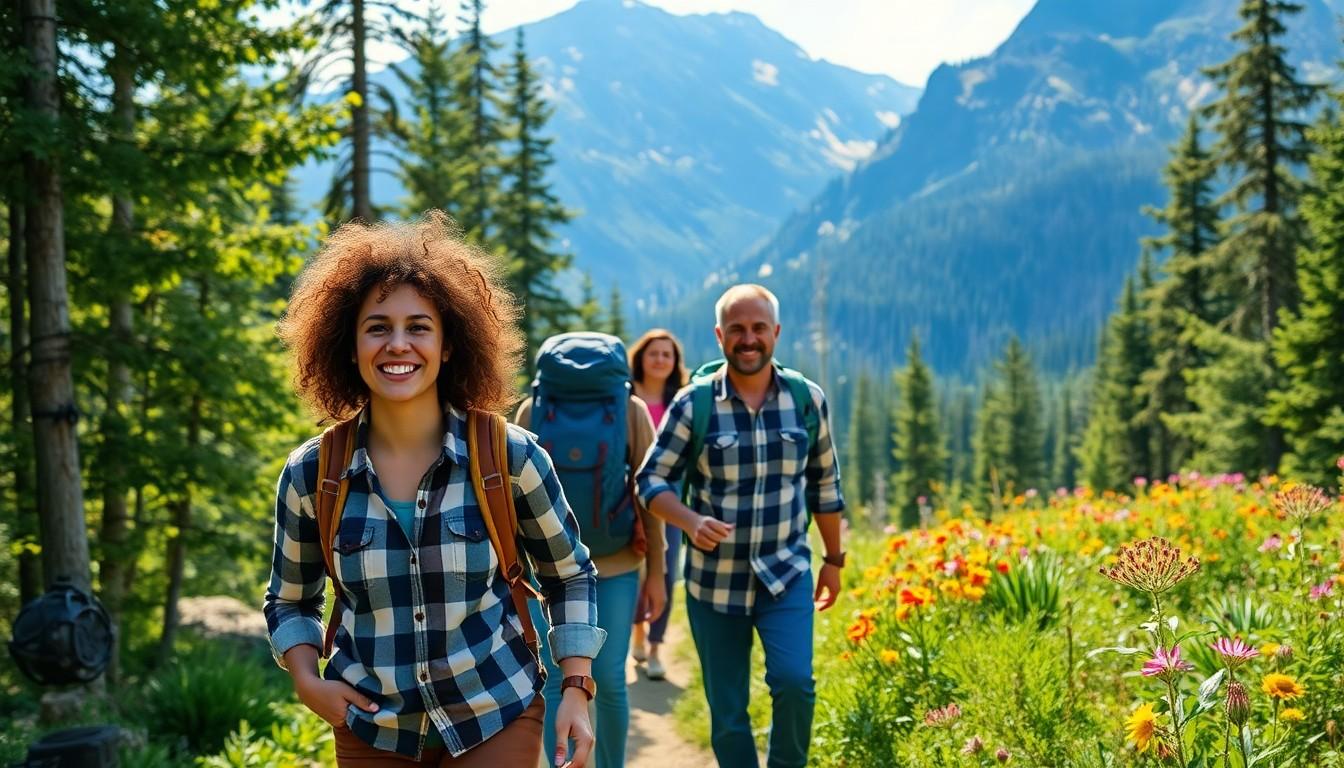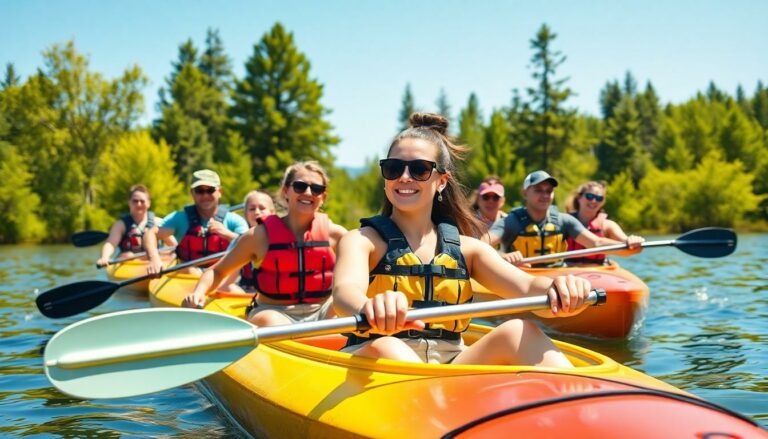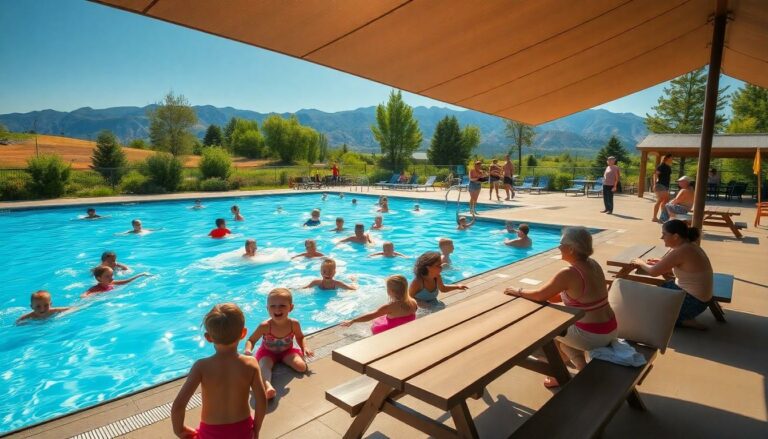Imagine stepping into a world where the great outdoors isn’t just a backdrop but a playground waiting to be explored. The Explore Act is here to unlock the treasures of public lands, making outdoor recreation more accessible than ever. From hiking trails that lead to breathtaking vistas to campgrounds where s’mores are practically mandatory, this act is your ticket to adventure.
explore act public lands outdoor recreation
The Explore Act enhances access to public lands for outdoor recreation. It focuses on improving infrastructure, which supports activities such as hiking, camping, and fishing. This legislation promotes sustainable practices, ensuring that nature remains preserved for future generations.
Visitors benefit from increased availability of facilities, including restrooms, picnic areas, and parking lots near popular recreational sites. New trails and pathways reflect the act’s commitment to diversifying outdoor experiences. Communities near these lands can experience economic growth through tourism associated with recreational opportunities.
Land managers gain resources to maintain and expand their offerings. The act encourages collaborations between state and federal agencies, fostering a unified approach to land use.
Public input plays a vital role in the implementation process, allowing local voices to shape their recreational landscapes. Enhanced educational programs will support visitors in understanding the importance of preservation and responsible usage of public lands.
Financial backing comes through appropriations, which ensures consistent funding for these projects. With priorities set, the Explore Act creates a comprehensive framework that maximizes recreational potential while emphasizing safety and inclusivity in outdoor activities.
Adopting this act sets a precedent for future legislation aimed at preserving natural resources. It underscores the value of outdoor recreation as both a community-building tool and an avenue for adventure, making public lands more inviting and accessible for everyone.
Importance of Public Lands

Public lands play a crucial role in enhancing outdoor recreation while preserving natural resources. They offer unique opportunities for adventure and foster a connection with nature.
Conservation and Preservation
Conservation efforts are essential for protecting ecosystems and wildlife habitats. Public lands serve as sanctuaries, maintaining biodiversity across various landscapes. They support numerous species, including endangered plants and animals. Preservation initiatives educate visitors on sustainable practices and responsible usage. Additionally, preserving these areas ensures future generations enjoy the same outdoor experiences.
Economic Impact
Economic benefits arise from the accessibility of public lands. Local communities experience growth through increased tourism and recreational activities. The outdoor recreation industry generates substantial revenue, with millions participating in hiking, camping, and fishing annually. Job creation results from the demand for services and amenities related to these activities. Furthermore, investments in infrastructure related to public lands attract more visitors, leading to sustained economic development.
Outdoor Recreation Opportunities
Public lands offer extensive recreational opportunities that cater to diverse interests. From scenic views to pristine environments, outdoor activities abound.
Hiking and Biking
Hiking trails wind through picturesque landscapes, providing various levels of difficulty to accommodate all skill sets. Cyclists benefit from designated biking paths that traverse exhilarating terrains. Both activities encourage exploration of nature and promote physical well-being. Visitors can experience the breathtaking vistas that public lands provide. Trail accessibility improves through enhanced infrastructure, making outdoor adventures enjoyable for everyone.
Camping and Fishing
Campsites set amidst nature allow families and friends to bond over campfires and stargazing. Campgrounds offer amenities like restrooms and picnic areas that elevate the camping experience. Fishing opportunities abound in lakes and rivers, attracting anglers seeking relaxation or the thrill of the catch. Waters keep ecosystems thriving while providing ample chances for anglers to engage in sustainable fishing practices. Public lands support these activities with improved facilities that maximize access to nature.
Seasonal Activities
Seasonal activities bring unique experiences throughout the year, enriching visitors’ connections to nature. Winter sports such as snowshoeing and cross-country skiing attract enthusiasts to snowy landscapes. In the fall, vibrant colors transform trails, making them ideal for leaf-peeping hikes. Spring heralds opportunities for wildlife watching as animals emerge from hibernation. Summer days invite families to enjoy picnics or swimming in designated areas, ensuring year-round fun on public lands.
Challenges and Considerations
Funding and resources play a crucial role in the successful implementation of the Explore Act. Consistent financial backing ensures that projects aimed at improving public land access move forward. Agencies often rely on appropriations to maintain current facilities while expanding offerings. Efficient allocation of these resources helps address pressing needs, such as restroom maintenance and the development of new trails. Local communities benefit when investments support tourism-related infrastructure. Collaboration between federal and state agencies facilitates a unified approach to resource distribution, enhancing the overall effectiveness of initiatives.
Environmental concerns must be addressed to protect ecosystems while promoting outdoor recreation. Balancing human activity with wildlife preservation remains essential for public lands management. Educating visitors on sustainable practices can mitigate potential damage to natural habitats. Biodiversity thrives in well-preserved areas, supporting various species. Frequent monitoring of environmental impact is necessary to ensure the health of these ecosystems. Strategies that promote responsible usage of outdoor spaces contribute to long-term conservation efforts. By prioritizing education and awareness, the Explore Act fosters a culture of stewardship among visitors.
Ways to Get Involved
Engagement with public lands offers various pathways for individuals looking to contribute. Each opportunity fosters a connection to nature while enhancing recreational experiences.
Volunteer Programs
Volunteer programs provide hands-on experiences in maintaining and beautifying public lands. Participants can join local conservation groups or park services to assist with trail maintenance, habitat restoration, and educational outreach. These efforts directly improve facilities and promote biodiversity on public landscapes. Contributions help maintain trails and facilities, ensuring they remain accessible for everyone. Adopting a trail or participating in clean-up events allows volunteers to make a lasting impact while enjoying the great outdoors.
Advocacy and Education
Advocacy plays a crucial role in promoting the Explore Act and enhancing public land access. Individuals can engage by contacting their representatives to voice support for outdoor recreation initiatives. Increased awareness and education ensure community members understand the importance of preserving public lands. Participation in workshops or community meetings presents opportunities to learn about sustainable practices and wildlife conservation. Sharing knowledge through social media helps spread the word about the benefits of public land access and responsible recreation. Each effort combines to create a greater understanding of outdoor stewardship and its significance for future generations.
vital spaces for adventure
The Explore Act represents a significant step toward enhancing access to public lands and enriching outdoor recreation experiences. By improving infrastructure and promoting sustainable practices, it ensures that everyone can enjoy nature’s beauty while preserving it for future generations.
Engagement and advocacy play crucial roles in supporting this initiative. Individuals can actively contribute through volunteer programs and community efforts, fostering a culture of stewardship that benefits both the environment and local economies.
As public lands continue to serve as vital spaces for adventure and connection, the commitment to their preservation and accessibility remains essential. Together, these efforts will ensure that the great outdoors remains a cherished resource for all.




